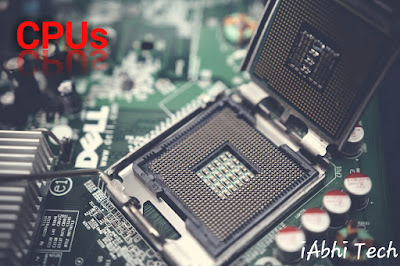Assuming that there is no manufacturing defect in your CPU and the installation procedure is correct, you will be relieved to know that CPU problems are rare.
So, you will not be struggling too much with this issue in your wedlock with your beloved PC. Now, rare is one thing, but this doesn’t mean it cannot happen to you.
So before you get too comfortable with the ‘rare’ word, let’s explore CPU failures. CPU failures usually fall under two categories:
So, you will not be struggling too much with this issue in your wedlock with your beloved PC. Now, rare is one thing, but this doesn’t mean it cannot happen to you.
So before you get too comfortable with the ‘rare’ word, let’s explore CPU failures. CPU failures usually fall under two categories:
- Random Failures: These are intermittent problems that occur pretty often.
- Catastrophic Failures: These issues are simple to diagnose and the PC usually does not boot up in this situation.
 |
| CPU |
Intermittent CPU Issues:
Most symptoms of a malfunctioning CPU tends to be sporadic and highly unpredictable.
It is best that you start with a good Problem Log, to identify the issue to its core. A good Problem Log will help you justify that CPU is the culprit of the issue.
Here are some important instructions that indicate intermittent problems. Surf through it and you will most certainly be able to discover whether your CPU is the troublemaker.
Following are the most common reasons why CPU suddenly starts misbehaving:
- Heat Problems: This happens because your processor is overheating.
- Power Problems: Either PSU is supplying too much or too little power supply and it is just not able to maintain the optimum level.
- Motherboard Problem: A motherboard component that communicates with the CPU is malfunctioning or damaged.
Catastrophic CPU Issues:
Usually in this situation, motherboard emits a lot of signals in the form of ‘beeps’ to notify the user that something is going wrong with your computer.
When you turn your computer on, motherboard produces different types of signals. Each signal indicates a unique problem.
All you need to do is identify the signal and verify if the issue corresponding to the signal is CPU-related.
So, if your computer is not booting and you believe that CPU is the cause, you have following two options to go for:
- Usually, motherboard emits beep signals when you power up your PC. Note the number and frequency of the beep signals and compare it with the motherboard manual you have. This will indicate you the problem component.
- You can also buy a tool (effective one) to diagnose hardware problems in your PC. This will give you the details of the faulty component of your computer.
Thanks!!
.

Insightful piece